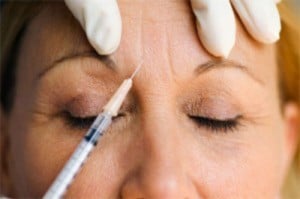Find a trusted dermatologist near you for consultation.
Find a trusted dermatologist near you for consultation.
Blog Article
Browsing Skin Cancer Therapy: The Vital Role of Mohs in Modern Dermatology Practices
Skin cancer cells, a complicated diagnosis, usually leaves individuals coming to grips with many therapy options. Amongst these, Mohs surgical treatment stands as a beacon in modern-day dermatology, renowned for its thorough strategy to cancer cells elimination and conservation of bordering healthy cells. This cutting-edge technique assures not only superior cosmetic results however also uses prompt outcomes, relieving person stress and anxiety. As we explore the ins and outs of this treatment, one will certainly appreciate its critical function in skin cancer treatment.
Understanding Skin Cancer Cells: Kinds and Threats
Skin cancer cells, a potentially dangerous ailment, is much more common than many individuals understand. This condition, caused by the unrestrained growth of unusual skin cells, primarily results from DNA damages due to exposure to the sunlight and ultraviolet (UV) light. There are 3 major sorts of skin cancer cells: Basic cell carcinoma, Squamous cell carcinoma, and Melanoma. While the former 2 are less dangerous and comprise the majority of identified situations, melanoma is one of the most unsafe. It represents just about 1% of skin cancer cells cases but triggers the large majority of skin cancer deaths - mohs surgery. Risk elements consist of fair skin, history of sunburn, extreme sun direct exposure, living at high altitudes or near the equator, having several moles, a household background of skin cancer, and compromised immune system.
What Is Mohs Surgery and How It's Reinventing Skin Cancer Cells Therapy
Despite the numerous treatments presently readily available for skin cancer cells, Mohs surgical treatment attracts attention as a groundbreaking and highly reliable option. Called after Frederic E. Mohs, the medical professional who developed the procedure, Mohs surgical treatment is a specific surgical technique made use of to treat skin cancer cells. Throughout the procedure, slim layers of cancer-containing skin are gradually eliminated and taken a look at till just cancer-free tissue stays. This approach enables the cosmetic surgeon to validate that all cancer cells have actually been gotten rid of at the time of surgical procedure. This level of accuracy, integrated with the capacity to spare as much healthy cells as possible, is transforming skin cancer cells treatment. Therefore, Mohs surgery has become a foundation of contemporary dermatology practices.
The Benefits of Mohs Surgical Treatment Over Standard Skin Cancer Cells Therapies
Structure on the ingenious nature of Mohs surgical treatment, it's vital to consider its countless benefits over typical skin cancer cells therapies. Unlike guidelines, Mohs uses a greater cure rate, commonly reaching 99% for novice therapies and 94% for reoccurring cancers cells. This accuracy is because of its one-of-a-kind strategy of gradually getting rid of and taking a look at cells layers up until only cancer-free cells remain (chemical peel). Furthermore, it minimizes damage to healthy and balanced skin, causing less scarring and improved cosmetic results. Mohs likewise offers prompt results, getting rid of the anxiety-ridden wait usual with other methods. It's cost-efficient, as the surgical treatment and tiny evaluation happen simultaneously, getting rid of the requirement for added lab solutions. Therefore, Mohs stands for a significant development in dermatological techniques.
The Procedure of Mohs Surgery: What to Expect During the Process

Potential Negative Effects and Post-Operative Treatment of Mohs Surgical Procedure
Going through Mohs surgical treatment, like any type of other surgery, includes potential adverse effects that individuals need to understand. Common negative effects include pain, wounding, and swelling at the surgery website. These are typically temporary and manageable with over-the-counter pain medication and ice packs. In uncommon instances, clients may experience infection, bleeding, or a sensitive reaction to the neighborhood anesthetic. Post-operative care is important to healing and reducing side results. This normally includes keeping the injury tidy and completely dry, taking recommended medications, and preventing arduous activities. People ought to likewise go to all follow-up appointments for injury care and surveillance. In many cases, extra treatments might be required to make certain complete elimination of the malignant cells. Adhering to these post-operative care guidelines click now can greatly improve recuperation and results.
Verdict

Report this page